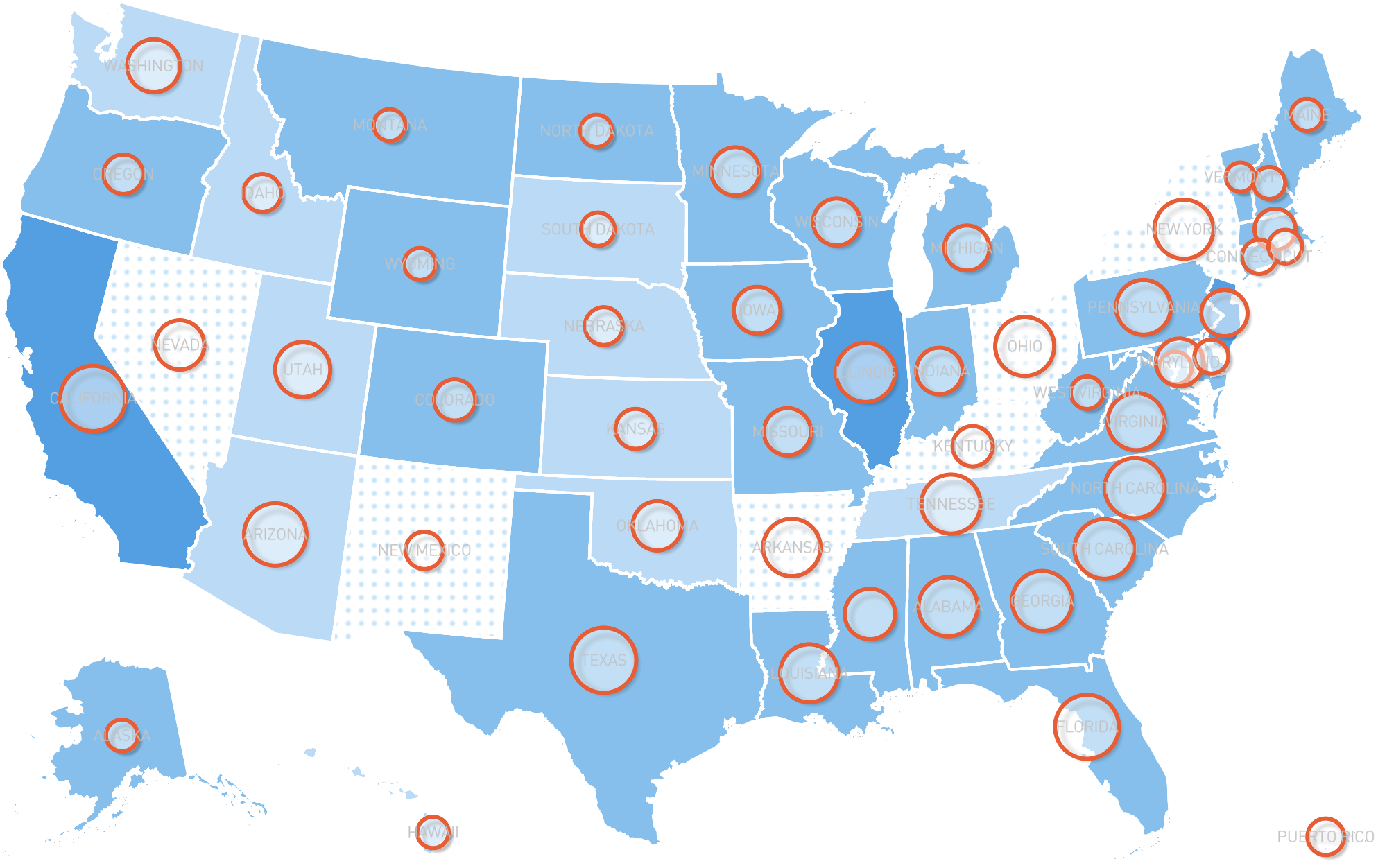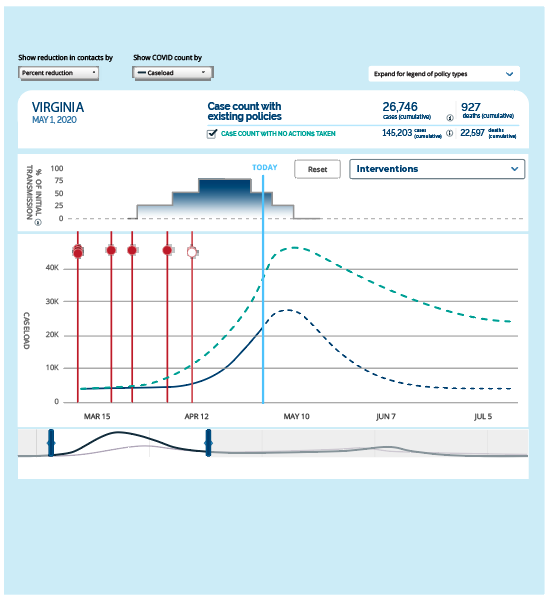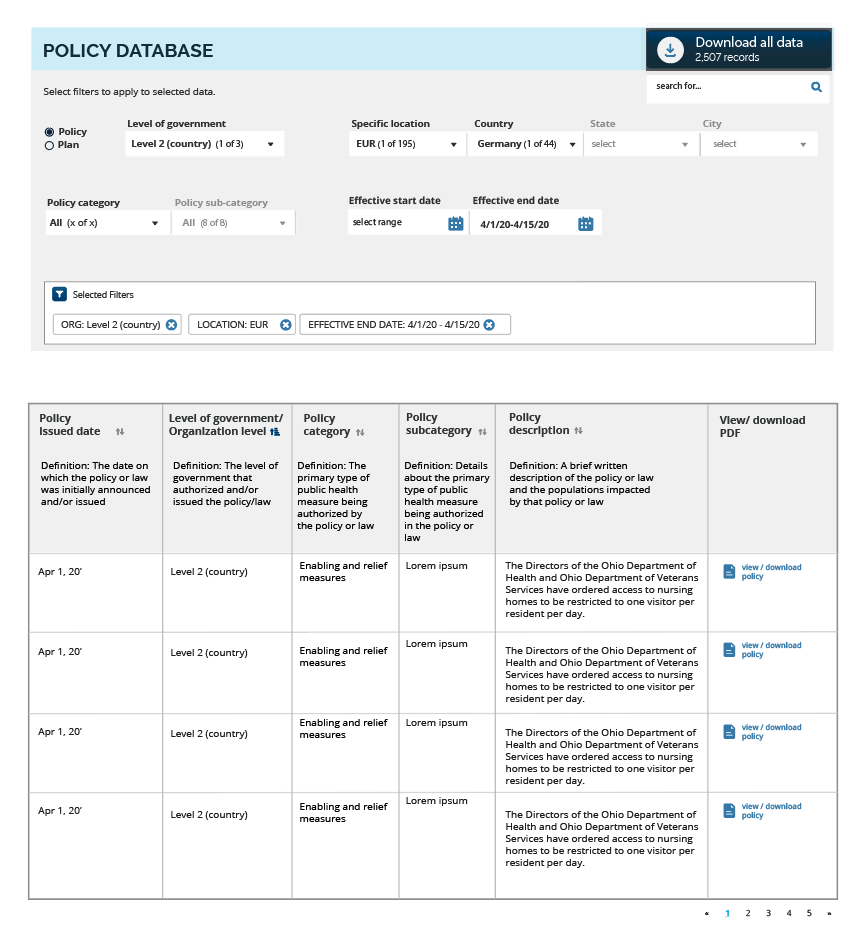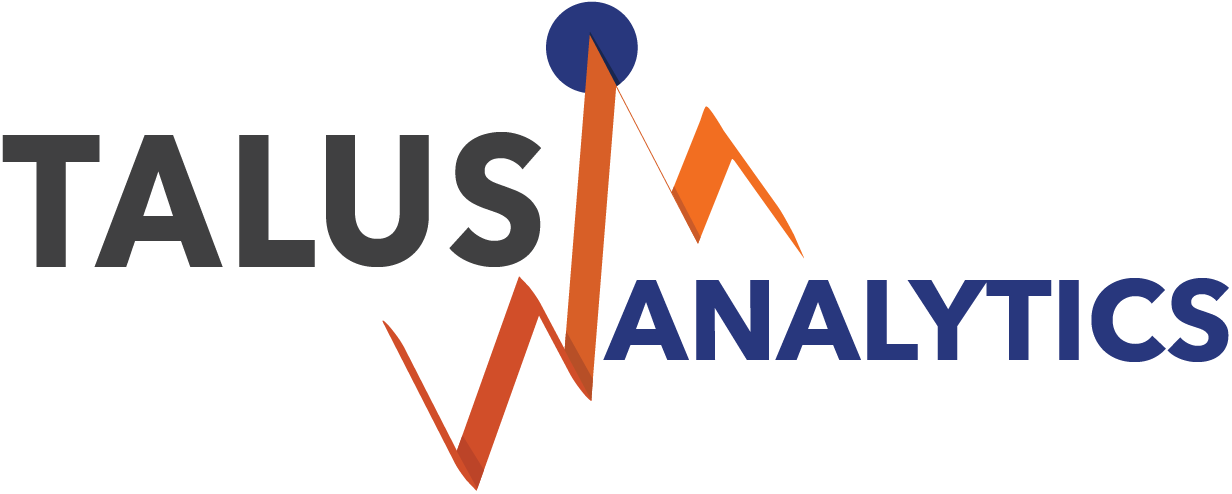COVID AMP Database and Modeling Tool: Assess How Well Your Pandemic Policies Have Worked
Aug 27, 2020
..gif)
Kathryn Sohm and Rachel Staley Grant
Needing to understand what policies are effective? Struggling with knowing how to flatten the curve in your community? The team behind COVID-Local.org launched a policy modeling tool and database of tens of thousands of COVID-19 response policies and plans enacted across the U.S. and countries around the world. COVID Analysis and Mapping of Policies (COVID AMP) is one of many tools released this year to help policy makers, local leaders, and the public learn more about the COVID-19 pandemic and how to keep their communities safe. What sets COVID AMP apart is that it illustrates the impact of policy decisions such as mask mandates and limits on public gatherings. The user-friendly tool shows what could have happened if these policies hadn’t been put in place and it can be used to project what will happen in the future with and without a host of pandemic-related policies in effect.
So, how does it work? The modeling tool contains a page for each U.S. state and a growing number of countries around the world. On each page, the innovative modeling tool pulls from the policy database and reports the number of COVID-19 cases in that location. Each page shows when policies and plans, such as “stay-at-home” guidelines, were enacted, and the model presents a projection curve of case counts based on the current policies in that location. Users can click the “What If” scenario for changes in the curve to see what would have happened with the COVID-19 case counts if these policies were not put in place.
But the tool doesn’t just look back. COVID AMP also models the future. Users can click on a future date in the graph and see what happens to the COVID-19 case count curve based on policies they select.
In a recent @NTI_WMD Twitter thread, the COVID AMP team analyzed New York’s data to see how implementing a strict “stay-at-home” policy on August 15th would help to slow the spread of COVID-19. We found that adding a stricter “stay-at-home” policy than is currently in place would significantly reduce the cases of COVID-19. In fact, our model illustrated that the curve would nearly be flattened.
..gif)
New York was among the hardest-hit states during the spring and has a current cumulative COVID-19 case count of more than 430,000. Using the COVID AMP “What If” scenario modeling, New York could have seen more than 15 million cases if policies and plans had not been put in place by state leaders.
There is much more data and information to be explored on COVID AMP. We’d love to hear if you’ve used it to assess the current status of your state or to help plan for the future. Get in touch with the COVID-Local expert team at covidlocal@nti.org
COVID-Local is a joint project of four organizations: the Global Biological Policy and Programs team at the Nuclear Threat Initiative (NTI), the Center for Global Development, the Georgetown University Center for Global Health Science and Security, and Talus Analytics. This team is comprised of former public health officials and experts with decades of experience in disease outbreaks.
The data available on COVID Analysis and Mapping of Policies (COVID AMP) is compiled from publicly available open source information on government-issued policies, and plans or guidance issued by governments, non-profits, for-profit, and higher education institutions.







